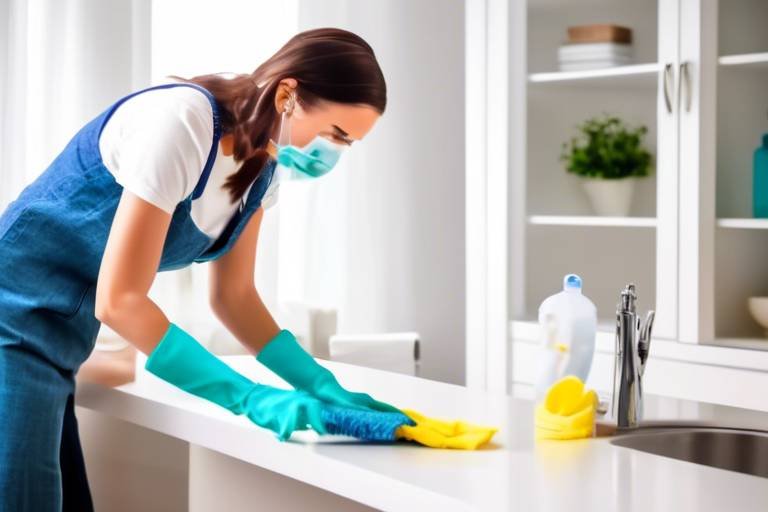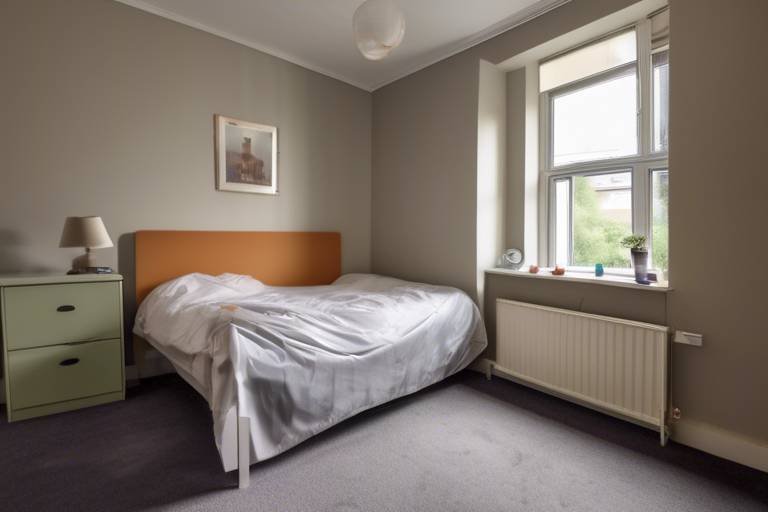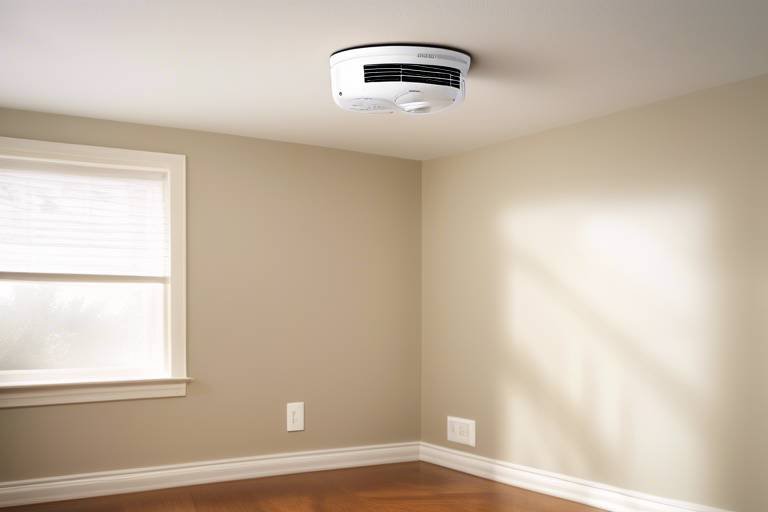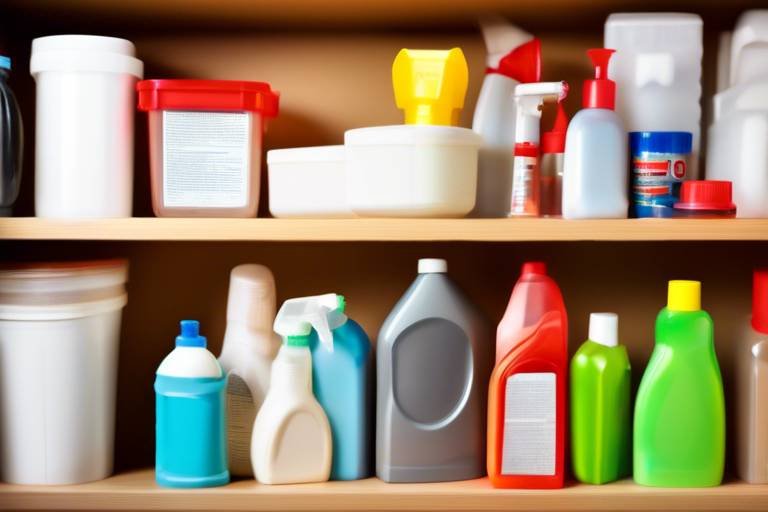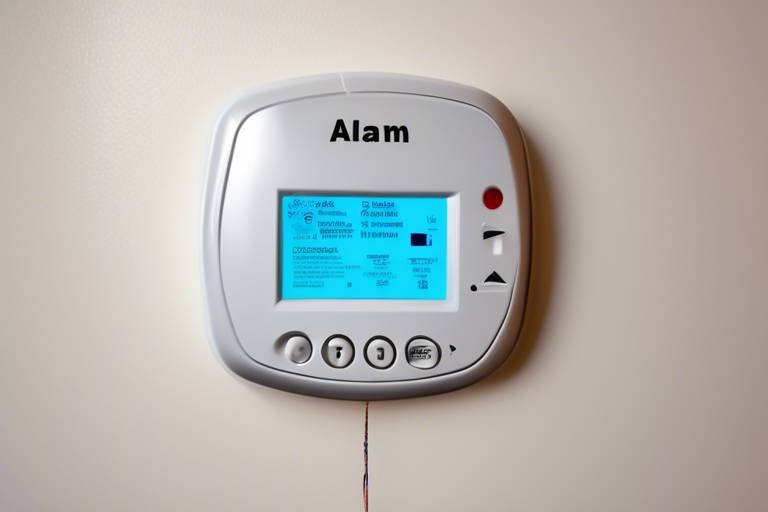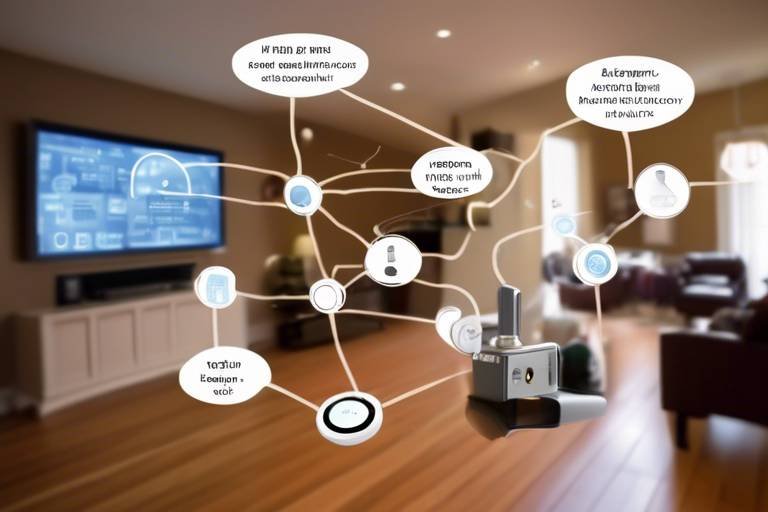Home Cleaning and Disinfection Tips to Minimize Health Risks
In today’s world, where health concerns are at the forefront of our minds, maintaining a clean and disinfected home is more important than ever. Cleaning is not just about making your space look good; it’s about creating a sanctuary that promotes health and well-being. The surfaces we touch daily can harbor a multitude of germs and allergens, making it essential to adopt effective cleaning practices. This article will guide you through essential cleaning and disinfection tips that can help minimize health risks in your home.
Cleaning plays a vital role in our lives, especially in preventing the spread of germs and allergens. Think about it: every time you walk into your home, you bring in not just your belongings but also dust, dirt, and microscopic invaders. Regular cleaning can significantly reduce these risks, creating a healthier environment for you and your family. Not only does a clean home look inviting, but it also helps in reducing the likelihood of illnesses. When surfaces are regularly cleaned, it minimizes the chances of bacteria and viruses lingering around, which is crucial for maintaining a strong immune system.
Having the right cleaning supplies is key to effective home cleaning. Imagine trying to cook a gourmet meal without the right utensils; it just wouldn’t work! Similarly, cleaning requires specific tools and products to enhance efficiency and effectiveness. Here are some must-have items that should be in every cleaning arsenal:
- Microfiber Cloths: Perfect for dusting and wiping surfaces without scratching.
- All-Purpose Cleaner: A versatile product that can tackle various surfaces.
- Disinfectant Wipes: Ideal for quick clean-ups of high-touch areas.
- Vacuum Cleaner: Essential for keeping floors and carpets free from dirt and allergens.
If you're concerned about harsh chemicals affecting your health and the environment, natural cleaning alternatives offer a safe and eco-friendly way to maintain cleanliness. These homemade solutions can replace traditional cleaning products, providing effective results without the harmful side effects. Not only do they reduce your exposure to toxic substances, but they also contribute to a healthier planet.
Two of the most versatile cleaning agents you can find in your kitchen are vinegar and baking soda. These natural ingredients can tackle a variety of common household stains and odors. For instance, vinegar can cut through grease and eliminate odors, while baking soda acts as a gentle abrasive that can scrub away tough stains. Together, they can be used to clean surfaces, freshen up carpets, and even unclog drains!
Not only do essential oils provide pleasant scents, but they also possess antimicrobial properties that can enhance your cleaning routine. Popular essential oils like tea tree, lavender, and lemon can be added to your cleaning solutions for an extra boost. Imagine your home smelling like a spa while also being free from harmful germs! It’s a win-win situation.
High-touch surfaces, such as doorknobs, light switches, and remote controls, are breeding grounds for germs. Regular disinfection of these areas is crucial in minimizing health risks. Consider creating a checklist of surfaces to prioritize, ensuring that you don’t overlook any critical spots. A simple routine of wiping down these surfaces with disinfectant wipes or sprays can make a significant difference in your home’s hygiene.
Consistency is key when it comes to cleaning. A well-structured cleaning schedule helps you stay on track and maintain a tidy home. Think of it like a workout routine; when you commit to a schedule, you're more likely to stick with it. Start by identifying daily, weekly, and monthly tasks, and allocate specific days for each. This way, cleaning won’t feel overwhelming, and you’ll be able to manage it effectively.
Understanding the difference between daily and weekly tasks is essential for efficient cleaning. Daily tasks might include:
- Wiping down kitchen counters
- Doing the dishes
- Making the beds
On the other hand, weekly tasks could involve:
- Vacuuming and mopping floors
- Dusting surfaces
- Cleaning bathrooms
By breaking down your cleaning tasks, you can ensure a thorough regimen that keeps your home sparkling clean.
Getting the whole family involved in cleaning can foster teamwork and responsibility. It’s not just about keeping the house clean; it’s about teaching valuable life skills. Consider assigning age-appropriate tasks to each family member. For instance, younger kids can help with dusting, while older ones can tackle vacuuming or taking out the trash. By making cleaning a family affair, you not only lighten your load but also create a sense of shared responsibility.
Q: How often should I clean my home?
A: It depends on your lifestyle, but a general rule is to do daily tasks every day, weekly tasks once a week, and deep cleaning monthly.
Q: Are natural cleaning products as effective as chemical ones?
A: Yes! Many natural products, like vinegar and baking soda, are highly effective at cleaning and disinfecting.
Q: How can I get my kids involved in cleaning?
A: Make it fun! Turn cleaning into a game or set up a reward system for completing tasks.
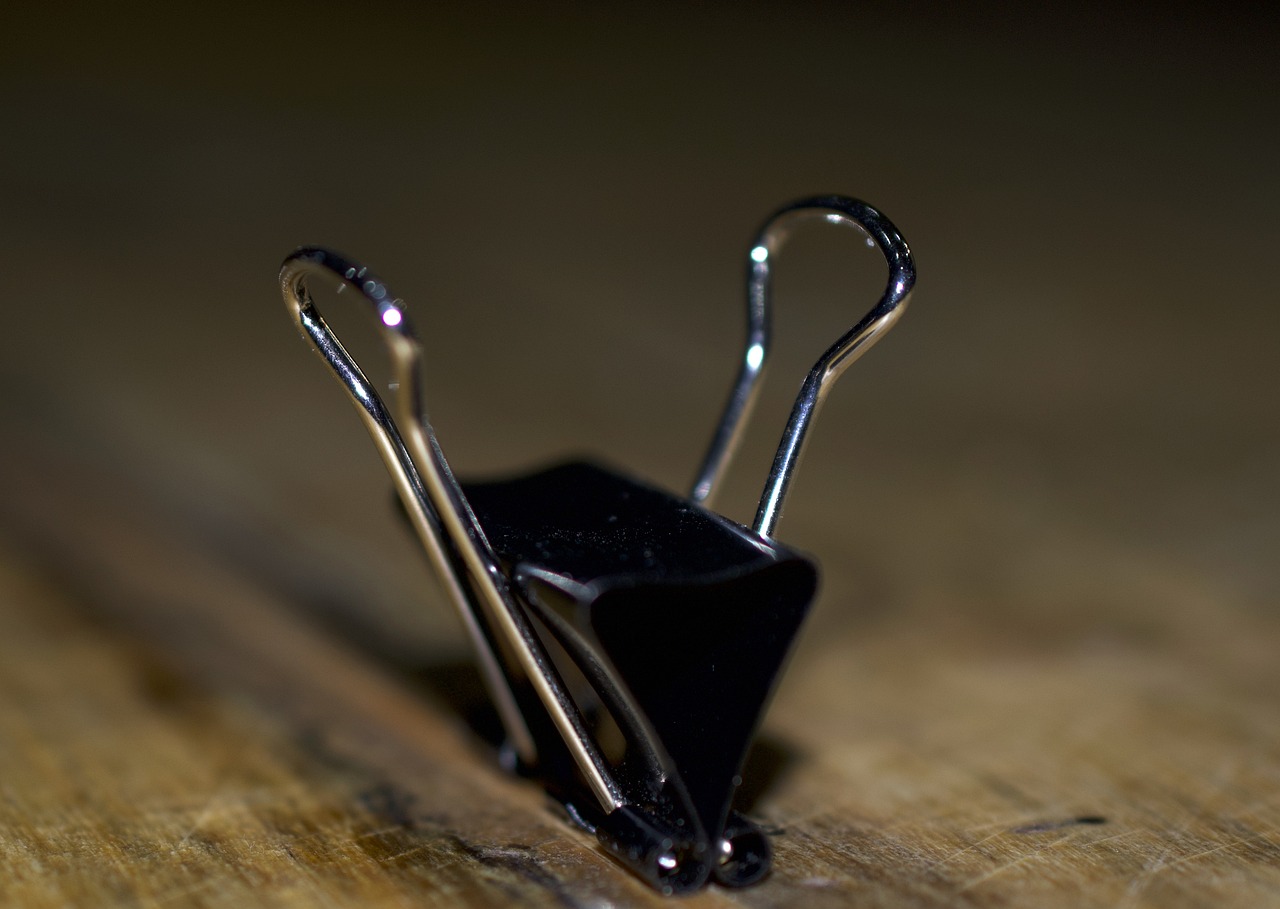
Understanding the Importance of Cleaning
This article provides essential cleaning and disinfection tips to help maintain a safe and healthy living environment, reducing the risk of illness and promoting overall well-being.
Cleaning is not just a chore; it’s a vital part of maintaining a healthy home. Imagine your home as a sanctuary, a safe haven where you can relax and recharge. But what happens when that sanctuary becomes a breeding ground for germs and allergens? Regular cleaning practices play a crucial role in preventing the spread of illnesses and ensuring that your living space is as safe as possible. Did you know that just a simple act of wiping down surfaces can significantly reduce the number of harmful bacteria lurking around? It's true!
When we talk about cleaning, we’re not only referring to tidying up the clutter or vacuuming the floors. Cleaning involves a comprehensive approach to removing dirt, dust, and pathogens that can compromise your health. Think about it: every time you step inside your home, you bring in outside contaminants. Shoes, bags, and even your clothing can carry germs that settle on surfaces. Regular cleaning helps to eliminate these potential threats, creating a healthier environment for you and your family.
Moreover, maintaining a clean home can have psychological benefits as well. A tidy space can lead to reduced stress levels and improved mental clarity. When your surroundings are organized and clean, it’s easier to focus on what truly matters. You might even find that the simple act of cleaning can become a form of self-care—a way to take control of your environment and promote a sense of well-being.
Let’s not forget about allergens. Dust mites, pet dander, and mold can wreak havoc on your health, especially if you suffer from allergies or respiratory issues. Regular cleaning helps to minimize these allergens, making your home a more comfortable place to live. For instance, vacuuming carpets and upholstery, washing bedding, and dusting surfaces can dramatically reduce allergy symptoms.
In conclusion, understanding the importance of cleaning goes beyond just aesthetics. It’s about creating a safe, healthy, and inviting space for you and your loved ones. So, the next time you grab that mop or dust cloth, remember that you’re not just cleaning; you’re investing in your health and well-being.
Having the right cleaning supplies is key to effective home cleaning. This section outlines must-have tools and products that enhance cleaning efficiency and effectiveness.
Natural cleaning alternatives offer a safe and eco-friendly way to maintain cleanliness. This subsection discusses various homemade solutions that can replace harsh chemicals.
Vinegar and baking soda are versatile cleaning agents. This section covers their uses and benefits in tackling common household stains and odors.
Essential oils not only provide pleasant scents but also possess antimicrobial properties. This part highlights popular essential oils and their cleaning applications.
High-touch surfaces are breeding grounds for germs. This section emphasizes the importance of regular disinfection and provides a checklist of surfaces to prioritize.
A cleaning schedule helps maintain consistency in home cleaning. This section offers tips on how to create an effective and manageable cleaning routine.
Understanding the difference between daily and weekly tasks is essential for efficient cleaning. This subsection breaks down tasks to ensure a thorough cleaning regimen.
Getting the whole family involved in cleaning can foster teamwork and responsibility. This section discusses strategies for encouraging participation from all household members.
Here are some common questions related to home cleaning:
- How often should I clean my home? It depends on your lifestyle, but a general rule is to clean high-traffic areas weekly and deep clean monthly.
- What are the best natural cleaning products? Vinegar, baking soda, and lemon juice are excellent natural cleaning agents.
- How can I motivate my family to help with cleaning? Make it a fun activity by playing music or setting up a friendly competition!
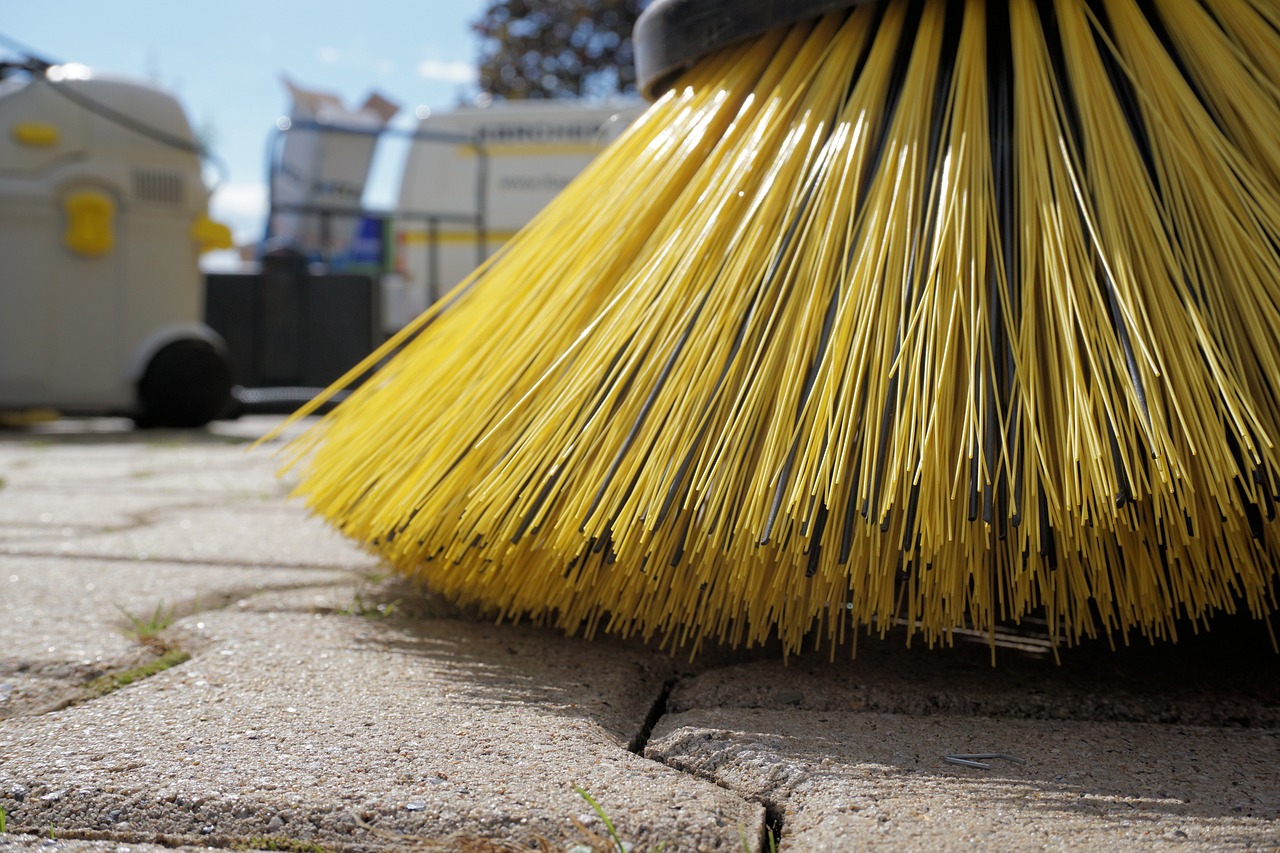
Essential Cleaning Supplies
When it comes to maintaining a clean and healthy home, having the right cleaning supplies is absolutely essential. Imagine trying to cook without the right utensils; it just doesn't work, right? The same goes for cleaning! You need the right tools to tackle dirt, grime, and germs effectively. So, what should you have in your cleaning arsenal? Let's dive into some must-have items that will make your cleaning sessions not only easier but also more effective.
First and foremost, you’ll want a good selection of cleaning cloths. Microfiber cloths are particularly effective as they trap dirt and dust without scratching surfaces. Think of them as the superheroes of the cleaning world! Pair these with a reliable all-purpose cleaner that can tackle various surfaces—from countertops to bathroom tiles. Look for products that are both effective and safe for your family and pets. You can even consider making your own cleaner using simple ingredients!
Now, let’s not forget about mops and brooms. A sturdy broom and a mop that can handle both wet and dry cleaning are crucial for keeping your floors spotless. For those hard-to-reach areas, an extendable duster can be a lifesaver. You know those pesky cobwebs in the corners? They don’t stand a chance with the right tools!
To give you a better idea of what you might need, here’s a quick table summarizing essential cleaning supplies:
| Cleaning Supply | Purpose |
|---|---|
| Microfiber Cloths | Dust and wipe surfaces without scratching |
| All-Purpose Cleaner | Clean various surfaces effectively |
| Broom and Dustpan | Sweep up dirt and debris |
| Mop | Deep clean floors |
| Extendable Duster | Reach high places and corners |
In addition to these essentials, having a good supply of gloves is important. Not only do they protect your hands from harsh chemicals, but they also keep them safe from germs. You wouldn’t want to touch nasty stuff directly, would you? And if you’re tackling stubborn stains, consider investing in a good scrub brush to help you scrub away the grime.
Lastly, don’t underestimate the power of disinfectants. In today’s world, keeping surfaces germ-free is more important than ever. Make sure you have a reliable disinfectant spray or wipes handy for those high-touch areas like doorknobs, light switches, and remote controls. Trust me, your future self will thank you for it!
By equipping yourself with these essential cleaning supplies, you’ll not only streamline your cleaning routine but also create a healthier living environment for you and your family. Remember, a clean home is not just about aesthetics; it’s about promoting well-being and preventing illness. So, gather your supplies, roll up your sleeves, and get ready to tackle that cleaning list!
Q: What are the best natural cleaning supplies?
A: Natural cleaning supplies include vinegar, baking soda, and essential oils. These ingredients are effective, eco-friendly, and safe for your family.
Q: How often should I clean my home?
A: It depends on your lifestyle, but a good rule of thumb is to do daily quick clean-ups, while deep cleaning should be done weekly or bi-weekly.
Q: Can I use the same cleaning products for different surfaces?
A: While some all-purpose cleaners are safe for various surfaces, it’s important to read labels and ensure they’re suitable for the specific material you’re cleaning.

Natural Cleaning Alternatives
In today's world, where we are increasingly aware of the impact of chemicals on our health and the environment, have become more popular than ever. These eco-friendly solutions not only help in maintaining a clean home but also ensure that we are not exposing ourselves or our loved ones to the harsh effects of synthetic cleaners. Imagine walking into your home, greeted by the fresh scent of nature rather than the overpowering smell of chemicals. Sounds inviting, right?
One of the most appealing aspects of natural cleaning is the simplicity of the ingredients involved. Many of these alternatives can be found right in your kitchen, making them not only cost-effective but also readily available. For instance, vinegar and baking soda are two powerhouse ingredients that can tackle a variety of cleaning challenges. Vinegar, with its acidic properties, can cut through grease and eliminate odors, while baking soda acts as a gentle abrasive, perfect for scrubbing surfaces without scratching. Together, they form a dynamic duo that can handle everything from kitchen counters to bathroom tiles.
Moreover, essential oils have gained immense popularity in the realm of natural cleaning. Not only do they provide a delightful aroma, but many also possess antimicrobial properties. For example, tea tree oil is known for its ability to kill bacteria and fungi, making it an excellent addition to your cleaning arsenal. Lavender oil, on the other hand, not only disinfects but also promotes relaxation with its soothing scent. By incorporating these oils into your cleaning routine, you can create a fresh and inviting atmosphere in your home.
To give you a clearer idea of how to use these natural alternatives, here’s a simple table that outlines some common cleaning tasks along with natural solutions:
| Cleaning Task | Natural Solution |
|---|---|
| Countertops | Mix equal parts vinegar and water in a spray bottle |
| Bathroom Mold | Sprinkle baking soda on the affected area and spray with vinegar |
| Air Freshener | Add a few drops of essential oil to a bowl of water |
| Glass Cleaning | Combine vinegar and water for a streak-free shine |
By opting for these natural cleaning alternatives, you not only protect your health but also contribute to a healthier planet. Plus, the satisfaction of knowing you’re using safe and effective methods can’t be overstated. So, the next time you reach for a bottle of chemical cleaner, consider the natural options available at your fingertips. Your home—and the Earth—will thank you!
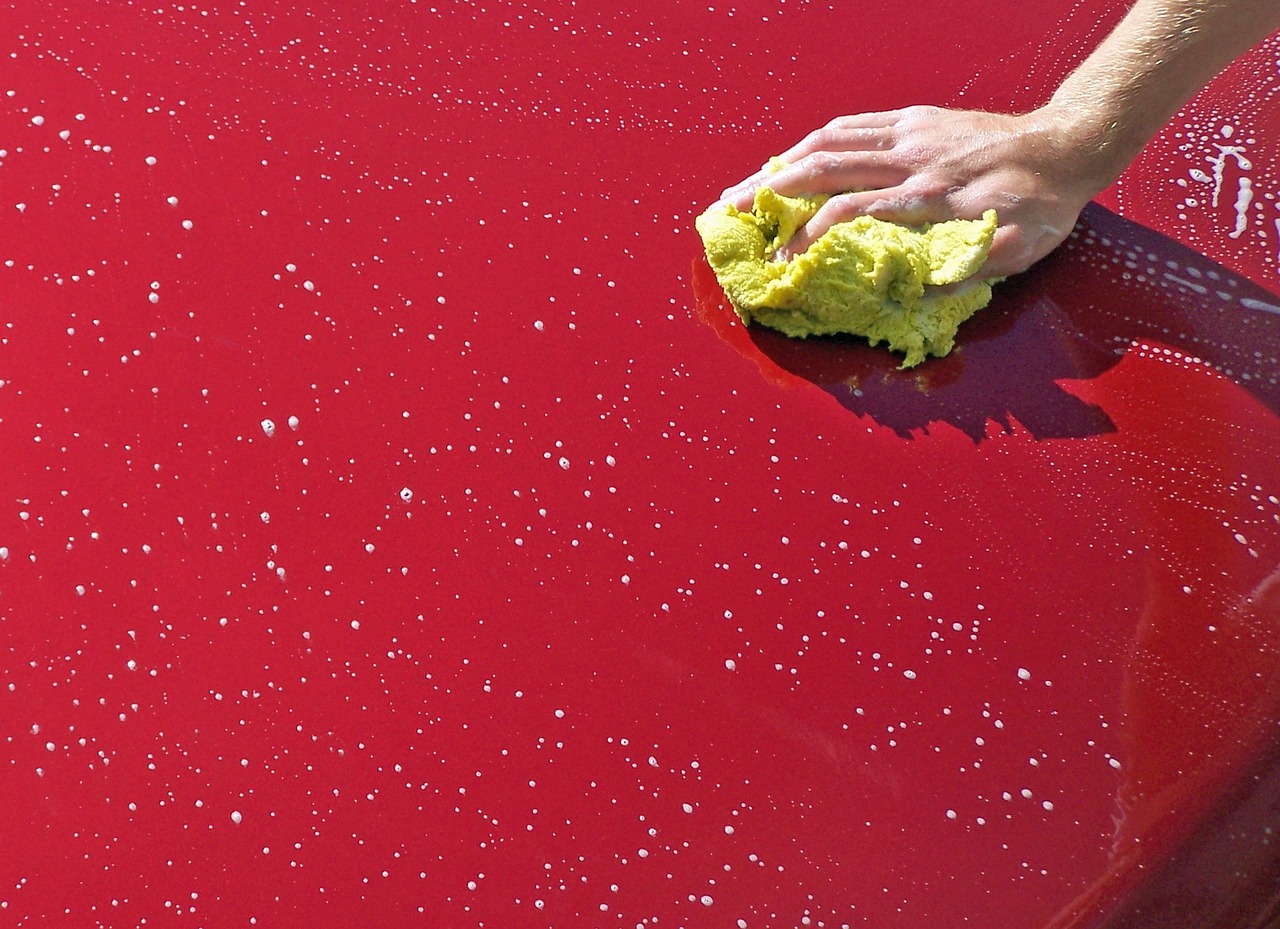
Vinegar and Baking Soda
are two of the most versatile and effective cleaning agents you can have in your home. They are not only economical but also safe for the environment and your family. Imagine having a powerful duo that can tackle everything from stubborn stains to unpleasant odors without the need for harsh chemicals. Sounds great, right? Let’s dive into how you can harness their power for a cleaner, healthier home!
First up, vinegar. This humble kitchen staple is a fantastic disinfectant. Its acidic nature allows it to break down grime, kill bacteria, and eliminate odors. You can use it on a variety of surfaces, including countertops, sinks, and even windows. Just mix equal parts of vinegar and water in a spray bottle, and you have yourself a natural cleaner that’s safe for most surfaces. However, remember to avoid using vinegar on natural stone surfaces like granite or marble, as the acidity can cause damage.
Now, let’s talk about baking soda. This powerhouse is not just for baking; it’s a fantastic deodorizer and gentle abrasive. It works wonders on tough stains and can help lift grime without scratching surfaces. For example, if you have a tough stain on your carpet, sprinkle some baking soda on it, let it sit for a few minutes, and then vacuum it up. Voila! The stain is gone, and your carpet smells fresh. Baking soda is also great for unclogging drains. Just pour half a cup down the drain followed by half a cup of vinegar, and watch the fizzing action work its magic!
The combination of vinegar and baking soda is where the real fun begins. When mixed together, they create a fizzy reaction that can help dislodge dirt and grime. You can use this mixture to clean your toilet bowl or even freshen up your drains. Just pour a cup of baking soda followed by a cup of vinegar into the toilet. Let it sit for about 30 minutes, then scrub and flush. Your toilet will be sparkling clean!
Here’s a quick reference table for their uses:
| Cleaning Task | Vinegar | Baking Soda |
|---|---|---|
| Deodorizing Fridge | Yes | Yes |
| Cleaning Windows | Yes | No |
| Unclogging Drains | Yes | Yes |
| Removing Carpet Stains | No | Yes |
| Disinfecting Surfaces | Yes | No |
In conclusion, incorporating vinegar and baking soda into your cleaning routine can drastically improve the cleanliness of your home while minimizing health risks. They are not just cost-effective but also provide a safe alternative to traditional cleaning products. So, the next time you’re faced with a mess, remember this dynamic duo! You’ll be amazed at how much they can do.

Essential Oils for Cleaning
When it comes to cleaning your home, essential oils are like the secret ingredient that can transform your routine from mundane to magical. Not only do they smell divine, but they also pack a punch against germs and bacteria. Imagine walking into a room that not only looks clean but also smells fresh and inviting. That’s the power of essential oils! They provide a natural alternative to harsh chemical cleaners and can be used in a variety of ways throughout your home.
One of the most popular essential oils for cleaning is tea tree oil. Renowned for its antimicrobial properties, tea tree oil can effectively tackle mold and mildew. Just a few drops mixed with water can create a powerful spray that leaves your surfaces sparkling and sanitized. Another favorite is lavender oil, which not only disinfects but also promotes relaxation. Imagine spritzing your linens with a lavender-infused cleaner after a long day; it’s like a mini spa experience right in your home!
But the benefits don’t stop there! Essential oils can also enhance your cleaning routine by adding a touch of aromatherapy. Citrus oils, such as lemon and orange, are fantastic for cutting through grease and grime while uplifting your spirits. The zesty scent can invigorate your cleaning process, making it feel less like a chore and more like a refreshing ritual. It’s like adding a splash of sunshine to your day!
Here’s a quick rundown of some essential oils you might want to consider for your cleaning arsenal:
- Tea Tree Oil: Great for disinfecting surfaces.
- Lavender Oil: Perfect for a calming atmosphere and antibacterial properties.
- Lemon Oil: Excellent for cutting grease and providing a fresh scent.
- Peppermint Oil: Offers a refreshing scent and has antibacterial properties.
- Eucalyptus Oil: Known for its antiseptic qualities and invigorating aroma.
Using essential oils is straightforward. You can add a few drops to your regular cleaning solutions or create your own by mixing them with water and a mild soap. For instance, a simple DIY cleaner could be made by combining 1 cup of water, 1 cup of vinegar, and 10-15 drops of your favorite essential oil. Shake it well in a spray bottle, and voila! You have a natural cleaner that’s both effective and delightful to use.
Moreover, essential oils can also be used in your laundry routine. Adding a few drops of lavender or eucalyptus oil to your wash can infuse your clothes with a fresh scent and provide natural antibacterial properties. It’s an easy way to elevate your laundry game and keep your family’s clothes smelling spectacular!
In conclusion, incorporating essential oils into your cleaning routine not only enhances the effectiveness of your efforts but also makes the process more enjoyable. By opting for these natural alternatives, you’re not just cleaning; you’re creating a healthier and more inviting space for you and your loved ones. So why not give it a try? Your home—and your senses—will thank you!
1. Can I use essential oils on all surfaces?
While many surfaces can handle essential oils, it’s best to test a small area first, especially on delicate materials. Avoid using them on natural stone surfaces, as they can cause damage.
2. Are essential oils safe for pets?
Some essential oils can be harmful to pets, so it’s crucial to research which oils are safe. Always consult with your veterinarian if you’re unsure.
3. How do I store essential oils?
Store essential oils in a cool, dark place to maintain their potency. Keep them tightly sealed and away from direct sunlight.
4. How can I make my own cleaning solutions with essential oils?
Mix water, vinegar, and your choice of essential oils in a spray bottle for a natural cleaning solution. Adjust the oil quantity based on your scent preference.
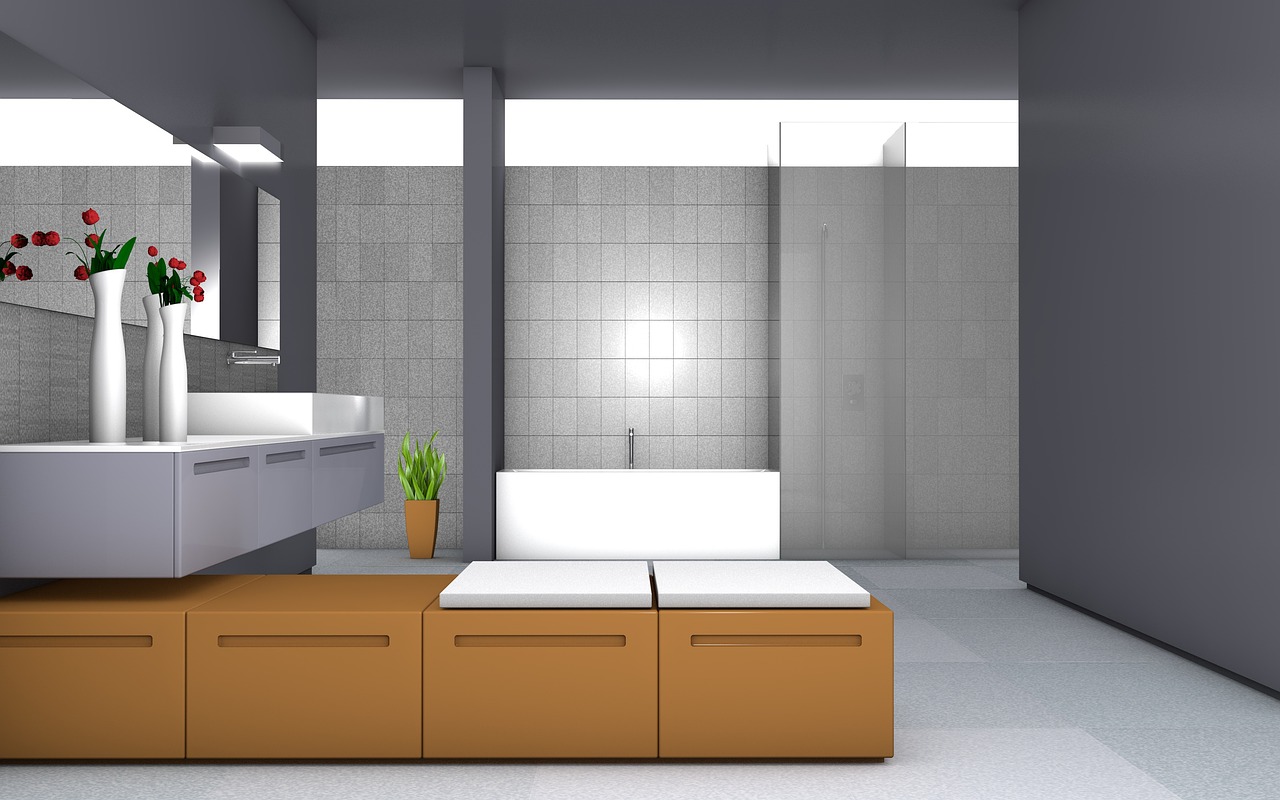
Disinfecting High-Touch Surfaces
When it comes to maintaining a healthy home, is not just a suggestion; it’s a necessity! These surfaces are the unsung heroes of our daily lives, yet they are also the prime suspects when it comes to the spread of germs and viruses. Think about it: how often do you touch your doorknobs, light switches, or remote controls? If you’re like most people, it’s a lot! This is why focusing on these areas can significantly reduce the risk of illness in your household.
High-touch surfaces are essentially the gateways for germs to enter our lives. Disinfecting them regularly can help keep those pesky pathogens at bay. So, what exactly qualifies as a high-touch surface? Here’s a quick rundown:
- Doorknobs and handles
- Light switches
- Countertops
- Remote controls
- Smart devices (phones, tablets)
- Bathroom faucets
- Handrails
- Kitchen appliances (microwave, fridge handles)
Incorporating a routine that includes disinfecting these surfaces can be a game-changer for your health. But how do you go about it? First, it’s essential to use the right disinfectants. Look for products that are proven to kill viruses and bacteria, and always follow the manufacturer's instructions for use. This ensures that you’re not just spreading the germs around but actually eliminating them.
Another vital tip is to pay special attention to the frequency of your cleaning. High-touch surfaces should ideally be disinfected daily, especially in households with children or those who are immunocompromised. Think of it as a protective shield—by routinely disinfecting, you’re fortifying your home against potential health risks.
Finally, remember that cleaning and disinfecting are two different processes. Start by cleaning the surface to remove dirt and grime, and then apply your disinfectant to ensure that any lingering germs are effectively eradicated. It’s like washing your hands before applying soap; you want to give those germs the least chance of survival!
In summary, being vigilant about disinfecting high-touch surfaces is a straightforward yet powerful way to promote health and well-being in your home. By making it a part of your daily routine, you’re not just cleaning; you’re creating a safer environment for yourself and your loved ones.
Here are some common questions regarding disinfecting high-touch surfaces:
| Question | Answer |
|---|---|
| How often should I disinfect high-touch surfaces? | It’s recommended to disinfect daily, especially in high-traffic areas or if someone in the home is sick. |
| Can I use natural cleaners instead of commercial disinfectants? | While some natural cleaners have disinfecting properties, ensure they are effective against viruses and bacteria. Vinegar and hydrogen peroxide can be good options. |
| What is the best way to disinfect electronics? | Use disinfectant wipes that are safe for electronics or a cloth lightly dampened with a disinfectant solution, avoiding excess moisture. |

Creating a Cleaning Schedule
Creating a cleaning schedule is like crafting a roadmap for a journey towards a healthier home. It helps to keep chaos at bay and ensures that every corner of your living space gets the attention it deserves. Think of it as a way to prioritize tasks and manage your time effectively, so you don’t end up overwhelmed by the never-ending list of chores. By having a structured plan, you can easily identify what needs to be done daily, weekly, or monthly, making your cleaning efforts more efficient and less daunting.
To kick things off, consider your household's unique needs. Do you have pets that shed fur everywhere? Or perhaps children who seem to attract dirt like a magnet? Understanding the specific requirements of your home will help you tailor your schedule. Start by jotting down all the cleaning tasks that need attention. You can categorize them into different frequency levels:
- Daily Tasks: These are the essentials that keep your home looking presentable. Think of tasks like washing dishes, wiping down kitchen counters, and sweeping high-traffic areas.
- Weekly Tasks: These tasks dive a little deeper. Vacuuming carpets, mopping floors, and cleaning bathrooms fall into this category and should be scheduled for specific days of the week.
- Monthly Tasks: These are often overlooked but are crucial for long-term cleanliness. Dusting ceiling fans, cleaning windows, and organizing closets can be spread throughout the month.
Once you’ve identified these tasks, it’s time to create a visual schedule. You can use a simple calendar or a digital app to map out your cleaning duties. This will not only help you stay organized but also provide a sense of accomplishment as you check off completed tasks. Consider color-coding different types of chores for quick reference. For instance, use one color for daily tasks, another for weekly, and a third for monthly tasks. This visual aid can make your schedule more engaging and less intimidating.
Moreover, it’s important to be realistic with your schedule. If you know that weekends are your only free time, don’t overload yourself with too many tasks. Instead, spread them out over the week, allowing for flexibility. You might also want to involve your family in the cleaning process. Assign specific chores to each member to foster a sense of teamwork and shared responsibility. This not only lightens your load but also teaches everyone the importance of maintaining a clean home.
Finally, remember to review and adjust your cleaning schedule periodically. Life is unpredictable, and your cleaning needs may change over time. If you find that certain tasks are taking longer than expected or if new responsibilities come up, don’t hesitate to tweak your schedule. The goal is to create a system that works for you and keeps your home a safe and healthy environment.
1. How often should I clean my house? It depends on your lifestyle and household. Daily tasks like dishwashing and tidying up should be done every day, while deep cleaning tasks can be scheduled weekly or monthly.
2. Can I involve my kids in cleaning? Absolutely! Assign age-appropriate tasks to your kids to teach them responsibility and make cleaning a family affair.
3. What are some tips for sticking to a cleaning schedule? Set reminders on your phone, keep your cleaning supplies organized, and make it a habit. The more you stick to it, the easier it becomes!

Daily vs. Weekly Tasks
When it comes to maintaining a clean home, understanding the difference between daily and weekly tasks is essential for developing an effective cleaning regimen. Think of your home as a living organism; it needs daily care to thrive and weekly attention to stay in top shape. Daily tasks are like those small, consistent actions that keep everything running smoothly, while weekly tasks are the more intensive treatments that tackle the deeper dirt and grime.
Daily cleaning tasks are often quick and can easily be integrated into your routine. They include activities such as:
- Wiping down kitchen counters after meals to prevent the buildup of crumbs and spills.
- Making your bed each morning, which not only tidies up your bedroom but also sets a positive tone for the day.
- Doing a quick sweep or vacuum of high-traffic areas to manage dust and dirt.
- Emptying the trash daily to avoid unpleasant odors and clutter.
These daily tasks, while seemingly small, can have a big impact on your overall home cleanliness. They help to prevent messes from piling up, making it easier to maintain a tidy environment.
On the other hand, weekly tasks are akin to a deep cleaning session that addresses areas often neglected in daily upkeep. These include:
- Dusting surfaces throughout the house, including shelves, baseboards, and ceiling fans, to remove accumulated dust.
- Cleaning bathrooms thoroughly, including scrubbing toilets, sinks, and bathtubs to eliminate soap scum and bacteria.
- Mopping floors to remove stains and dirt that a quick sweep may miss.
- Changing bed linens to ensure a fresh sleeping environment.
By dividing your cleaning tasks into daily and weekly categories, you can create a manageable routine that prevents overwhelm. Consider setting aside specific times during the week for your deep cleaning tasks, perhaps on weekends when you have more time. This way, you can enjoy a clean home without feeling like you’re spending all your free time cleaning!
To help you visualize this, here’s a simple table that outlines the differences:
| Task Type | Examples | Frequency |
|---|---|---|
| Daily Tasks | Wiping counters, making beds, quick vacuum | Every day |
| Weekly Tasks | Dusting, deep cleaning bathrooms, mopping | Once a week |
Involving the entire family in this cleaning routine can also make a significant difference. Assigning daily and weekly tasks to different family members not only lightens the load but also fosters a sense of teamwork and responsibility. After all, everyone benefits from a clean home!
Q: How can I encourage my family to participate in cleaning tasks?
A: You can make cleaning a fun family activity by turning on music, setting a timer for quick clean-up challenges, or rewarding everyone with a treat after completing tasks.
Q: What should I do if I miss a cleaning task?
A: Don't stress! Just add it to your schedule for the next day or week. Consistency is key, but life happens, and it's okay to adjust.
Q: Are there any specific products I should use for different tasks?
A: Yes! For daily tasks, multi-surface cleaners work wonders. For weekly deep cleaning, consider using specialized products for bathrooms and kitchens to tackle tough stains and grime.

Involving the Whole Family
Cleaning the house can often feel like a daunting task, especially when you’re doing it all alone. But what if I told you that you could turn this chore into a fun family activity? Involving the whole family not only lightens the load but also fosters a sense of teamwork and responsibility among household members. Think of it as a mini-adventure where everyone plays a part in creating a clean and healthy living space. So, how can you get everyone on board?
First and foremost, it’s essential to communicate the importance of cleaning and how each person's contribution matters. You might say, “Hey, when we all pitch in, we can make our home sparkle in no time!” This approach encourages a sense of ownership and pride in your living environment. You can even create a cleaning chart that assigns tasks based on age and ability. For example, younger kids can handle dusting low surfaces, while older siblings can tackle vacuuming or organizing. This way, everyone knows what they are responsible for, and it becomes a fun challenge rather than a chore.
Another effective strategy is to turn cleaning into a game. Set a timer and see who can pick up the most toys or dust the most surfaces in a short amount of time. You can even reward the winner with a small treat or a fun family activity afterward. Imagine the excitement of racing against the clock! Additionally, playing upbeat music while cleaning can create a lively atmosphere that makes the task at hand feel less like a burden and more like a party.
To keep the momentum going, consider establishing a weekly cleaning day where everyone participates. Whether it’s Saturday morning or Sunday afternoon, having a designated day creates a routine that everyone can anticipate. You might even want to turn it into a family brunch day afterward, rewarding everyone’s hard work with a delicious meal together. The key is to make it a positive experience that everyone looks forward to.
Lastly, don’t forget to celebrate your collective efforts! After a thorough cleaning session, take a moment to admire your hard work. You could even take before-and-after photos to showcase the transformation. This not only reinforces the value of teamwork but also instills a sense of accomplishment in everyone. Remember, a clean home is not just about cleanliness; it’s about creating a comfortable and inviting space for family and friends.
Q: How can I motivate my kids to help with cleaning?
A: Try making it fun! Use games, music, and rewards to engage them. Assign age-appropriate tasks and celebrate their efforts to keep them motivated.
Q: What tasks can young children handle?
A: Young children can help with simple tasks like picking up toys, dusting low surfaces, and sorting laundry. Make sure to supervise and provide guidance as needed.
Q: How often should we have a family cleaning day?
A: Establishing a weekly cleaning day can help maintain a clean home. Choose a day that works best for your family’s schedule and stick to it!
Q: What if someone in the family is resistant to cleaning?
A: Discuss the importance of a clean environment and how it benefits everyone. Encourage open communication and try to understand their perspective. Sometimes, a little empathy can go a long way in fostering cooperation.
Frequently Asked Questions
- Why is cleaning important for my health?
Cleaning is essential because it helps eliminate germs, allergens, and dirt that can lead to illnesses. Think of your home as a protective shield; regular cleaning ensures that this shield remains strong and effective against harmful invaders.
- What cleaning supplies should I have at home?
Having the right cleaning supplies can make a world of difference. Essential items include all-purpose cleaners, disinfectants, microfiber cloths, sponges, and a good vacuum. These tools work together to tackle dirt and germs efficiently.
- Are there natural alternatives to chemical cleaners?
Absolutely! Natural alternatives like vinegar, baking soda, and essential oils can clean effectively without harsh chemicals. They’re not only safer for your family but also better for the environment. Plus, who doesn’t love a home that smells like fresh lemon or lavender?
- How often should I disinfect high-touch surfaces?
High-touch surfaces should be disinfected daily, especially in homes with children or pets. Think of these surfaces as the front lines in the battle against germs. Regular disinfection helps keep your home safe and healthy.
- What should be included in a cleaning schedule?
A good cleaning schedule should include daily tasks like wiping down counters and weekly tasks like vacuuming and mopping floors. It’s all about creating a rhythm that works for you and your family, ensuring that no corner of your home is overlooked.
- How can I get my family involved in cleaning?
Involving the whole family can be as simple as assigning age-appropriate tasks and making it a fun activity. Consider using a reward system or creating a cleaning playlist to make chores feel less like work and more like a team effort!

